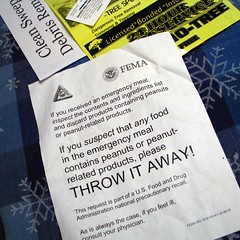Q&A: What has been done to the design of buildings to reduce damage and injury to earthquake prone areas?
Question by CJ: What has been done to the design of buildings to reduce damage and injury to earthquake prone areas?
Many people live in earthquake areas. What has been done to the design of buildings to minimize damage and injury. Any answers would be appreciated . Thanks
Best answer:
Answer by ovis
One of the simplest adaptations is to build sturdy buildings out of wood, rather than brick or stone. Wooden buildings can naturally flex more to dampen the oscillations associated with an earthquake, whereas a brick structure would be more prone to crumble.
There are high-tech solutions too, employed in, for example, tall buildings in cities. Large masses with some degree of constrained movement can help dampen the motion of an earthquake. Alternatively or additionally, there may be measures taken to construct building that are partially decoupled from the ground (eg, on rollers), so that if an earthquake occurs, only a fraction of its energy is transferred into the building.
On a related note, one of my favourite examples of construction around tectonic or seismic events is the Alyeska Pipeline in Alaska. Where the pipeline crosses the Denali fault, it’s built on rails, so that if there is any fault offset (such as there was in the 2004 Denali Earthquake), the pipeline will slide and escape serious damage.
http://www.photoseek.com/alaska-show/images/06AK_3195-Alyeska-Pipeline.jpg
Hope that helps!
What do you think? Answer below!
Q&A: What to Do If You Have Suffered an Injury from a Recalled Product?
Question by : What to Do If You Have Suffered an Injury from a Recalled Product?
Best answer:
Answer by DeannetheGreat
Get a lawyer. It will be too much trouble to wade through the legal quagmire otherwise. But only do so if the injury was substantial and it can be linked to the product’s defect.
What do you think? Answer below!



